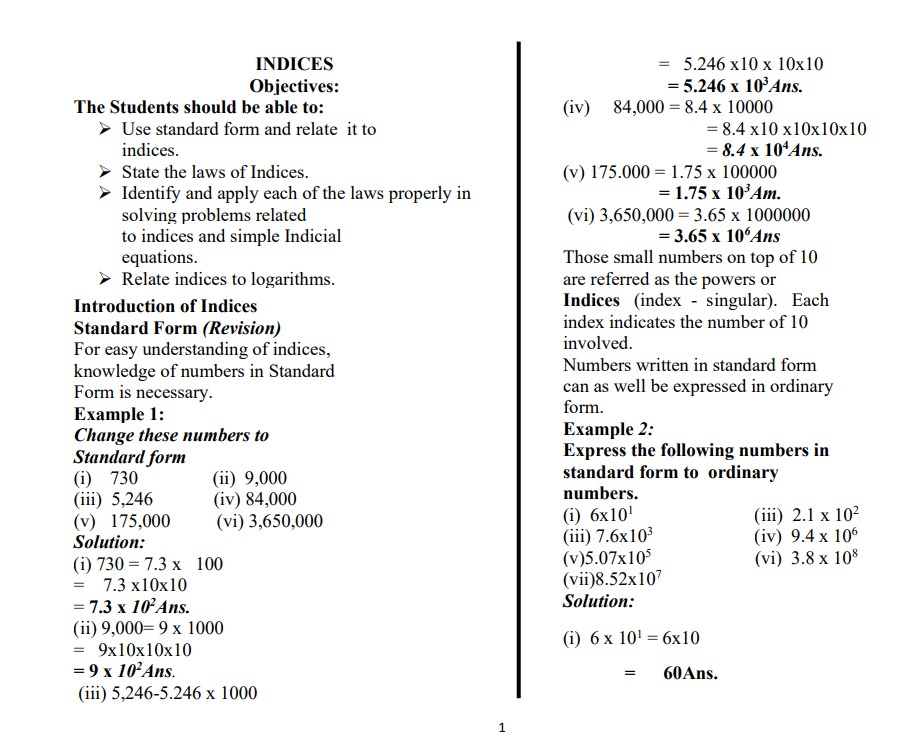Indices in Algebra
Summary:
This document is a comprehensive study note on indices in algebra, designed for a course at the University of Nigeria Nsukka (UNN). It covers various indices-related topics, including standard form, laws of indices, simplifying expressions, solving indicial equations, and more.
The note begins by introducing the concept of standard form and its relation to indices. It provides examples of converting numbers to standard form and vice versa, emphasizing the use of powers or indices to represent the number of tens involved.
The laws of indices are then explained and applied in various problem-solving scenarios. Students learn to multiply and divide numbers with indices, raise numbers to power, and simplify expressions containing indices. The importance of understanding negative indices and zero indices is also highlighted.
The note further explores exponential and simple indicial equations. It provides step-by-step solutions to equations involving exponential terms, allowing students to practice solving such equations and understanding the concept of equivalence between exponential and ordinary forms.
Overall, this study note serves as a comprehensive guide to indices, providing students with the necessary knowledge and problem-solving techniques to master this important topic in algebra.
Excerpt:
Indices in Algebra
INDICES
Objectives:
The Students should be able to:
➢ Use the standard form and relate it to indices.
➢ State the laws of Indices.
➢ Identify and apply each of the laws properly in solving problems related to indices and simple Indicial equations.
➢ Relate indices to logarithms.
Introduction of Indices
Standard Form (Revision)
For an easy understanding of indices, knowledge of numbers in Standard Form is necessary.
Example 1:
Change these numbers to
Standard form
(i) 730 (ii) 9,000
(iii) 5,246 (iv) 84,000
(v) 175,000 (vi) 3,650,000
Solution:
(i) 730 = 7.3 x 100
= 7.3 x10x10
= 7.3 x 102Ans.
(ii) 9,000= 9 x 1000
= 9x10x10x10
= 9 x 102Ans.
(iii) 5,246-5.246 x 1000
= 5.246 x10 x 10×10
= 5.246 x 103Ans.
(iv) 84,000 = 8.4 x 10000
= 8.4 x10 x10x10x10
= 8.4 x 104Ans.
(v) 175.000 = 1.75 x 100000
= 1.75 x 103Am.
(vi) 3,650,000 = 3.65 x 1000000
= 3.65 x 106Ans
Those small numbers on top of the 10 are called the powers or Indices (index-singular). Each index indicates the number of 10 involved. Numbers written in standard form can as well be expressed in ordinary form.


Reviews